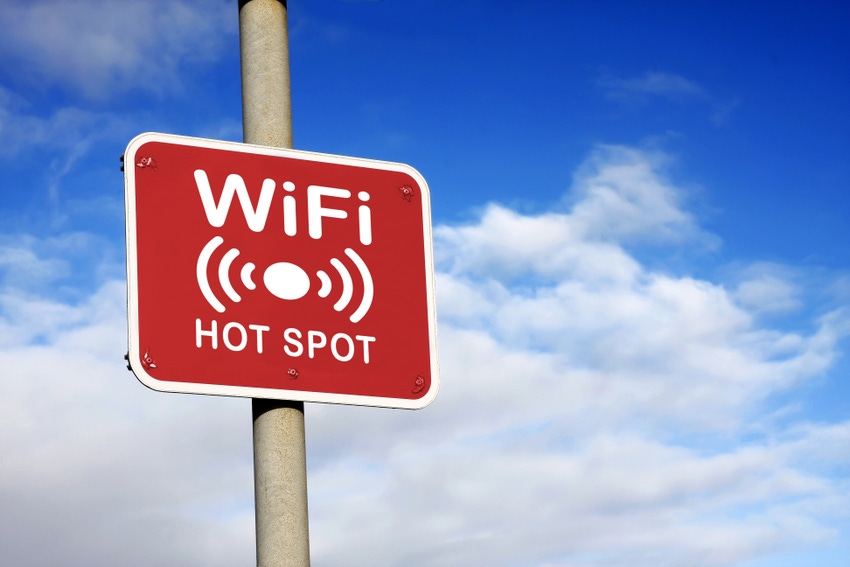To date much of the disruption in the provision of wireless access has been driven by small companies; which is what you’d expect. And, again unsurprisingly, it’s easy enough for the big boys to dismiss these companies as trivial at worst, and plucky (if misguided) upstarts at best.
January 28, 2015

Telecoms.com periodically invites expert third-party contributors to submit analysis on a key topic affecting the telco industry. In this article Dave Fraser, CEO of Devicescape, takes a look at the apparent disruption currently underway in the use of Wi-Fi for the provision of mobile services.
The Wall Street Journal published a story this week promising that the wireless industry business model is about to be turned on its head. The story built on the WSJ’s breaking coverage of an anticipated US MVNO launch by Google, which is expected to incorporate Wi-Fi into the connectivity mix, with the news that US cable TV and broadband provider Cablevision will shortly debut a Wi-Fi only smartphone service priced at $9.95/month.
Exciting, disruptive stuff.
To date much of the disruption in the provision of wireless access has been driven by small companies; which is what you��’d expect. And, again unsurprisingly, it’s easy enough for the big boys to dismiss these companies as trivial at worst, and plucky (if misguided) upstarts at best.
You can’t say the same for the likes of Google and Cablevision. These are organizations with the kind of clout that can be neither dismissed nor ignored. Their brands, their customer relationships, their reach, their complementary service suites… Traditional operators should be worried.
But, hang on a minute: What do these guys know about providing wireless service? Google and Cablevision haven’t spent years building expertise in wireless service provision, investing in spectrum, deploying, operating and optimizing complex cellular networks. Do they seriously think they can swan in and upset decades of established order…?
An old-world view of the industry would doubtless question their lack of experience along these lines. But we don’t live in the old world. The alternative view – and it’s a compelling one – is that one person’s experience is just another person’s baggage.
The absence of a cellular legacy means these players, and an increasing number of others with designs on what has hitherto been a heavily defended sector, can turn fresh eyes on the market, and shape a service designed to meet today’s demand for wireless access. What fresh eyes see, after all, can be very different from what is seen by eyes that have grown accustomed over many years to the same view.
These newcomers don’t have an LTE network to invest in, nor GSM, CDMA or WCDMA networks clanking along behind them, weighing heavily on every decision that’s made.
Instead they’re free to cherry pick the best of all available connectivity, with nothing like the barriers to entry once faced by the incumbents, or the steel tower restraints of a network-based belief system.
So if you’re coming at this fresh, and free to choose from all types of connectivity, what do you conclude? You conclude, as Google and Cablevision seem to have done (according to the WSJ), that in today’s connectivity landscape you can’t have the best of all available connectivity without Wi-Fi.
Why? Because it already accounts for the clear majority of smartphone users’ data consumption. Behaviour is established; why would you waste time trying to prise your target market away from a winning formula?
If you then look at all the available Wi-Fi in the market, you see that there is some owned by carriers, some owned by specialists, and a great deal in people’s homes. But by far the widest, richest Wi-Fi resource of all is amenity Wi-Fi, fundamental to the customer experience of the venues and businesses that make it freely available, and beloved by the end users who connect to it every day in their hundreds of millions.
So here are two more things you can be certain of, along with death and taxes. First, Wi-Fi will be a key feature of every disruptive wireless service that comes to market; the pure cellular play is on the wane just as the pure Wi-Fi play is gaining traction. And, second, amenity Wi-Fi will loom large in the emerging strategies of new and traditional operators alike.
Some of them, at least. The conciliatory conclusion to draw from this would be that there’s room for everyone, all the established operators and all the newcomers. But there’s not. The latest wave of consolidation in the US and Europe is testament to the fact that not every mobile operator will survive in the face of increased disruption and intensifying competition.
Those that do are going to be the ones who are able to force themselves to look at their sector, like these non-traditional newcomers, with fresh eyes. The ones who can take the wealth of experience they’ve amassed and apply it to a wider world in which connectivity is bigger than their network (and in which they’re not afraid to admit it).
As for those that don’t… Well, it’s much easier to turn something on its head if that head is already buried in the sand.

Dave Fraser, Ceo, Devicescape
Dave Fraser brings 30 years of experience in designing, building, marketing, and managing software to his role as CEO of Devicescape. Dave is passionate about products that have a direct, positive impact on everyday life and in particular the role of intelligent, connected devices. At Devicescape, Dave helped initiate the concept of the Curated Virtual Network that lies at the heart of the company’s service platform and enables integration of devices with exciting cloud-based applications and services.
Read more about:
DiscussionAbout the Author(s)
You May Also Like








.png?width=300&auto=webp&quality=80&disable=upscale)


_1.jpg?width=300&auto=webp&quality=80&disable=upscale)


.png?width=800&auto=webp&quality=80&disable=upscale)